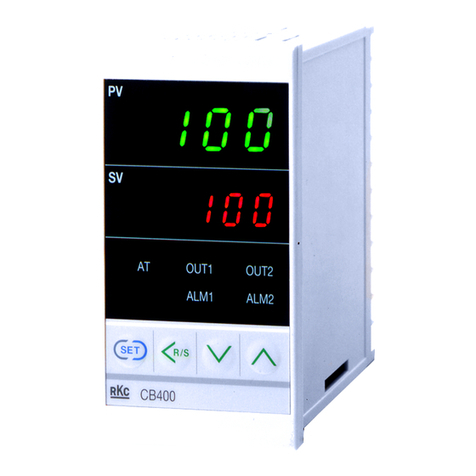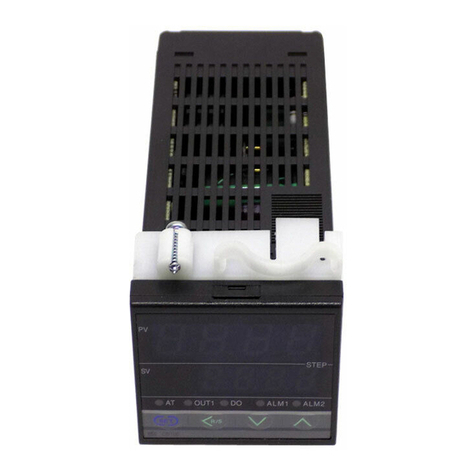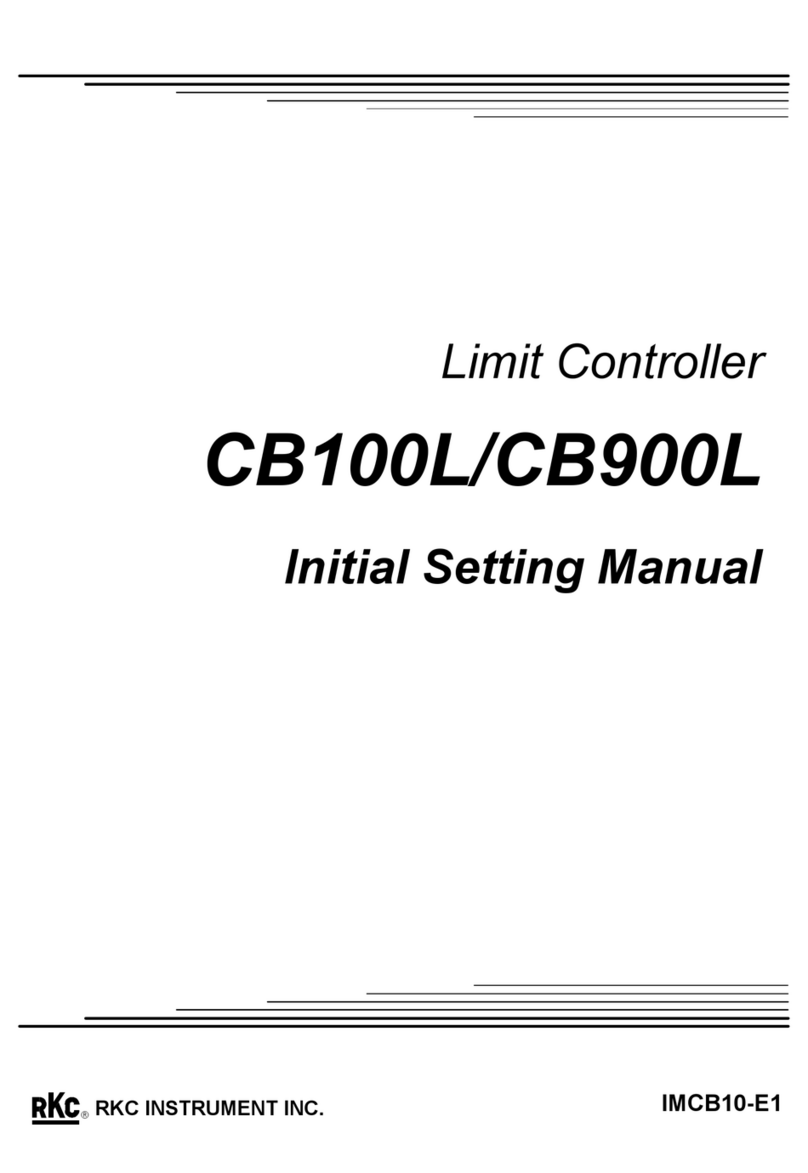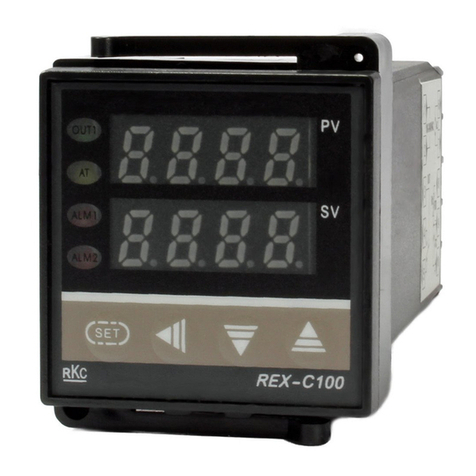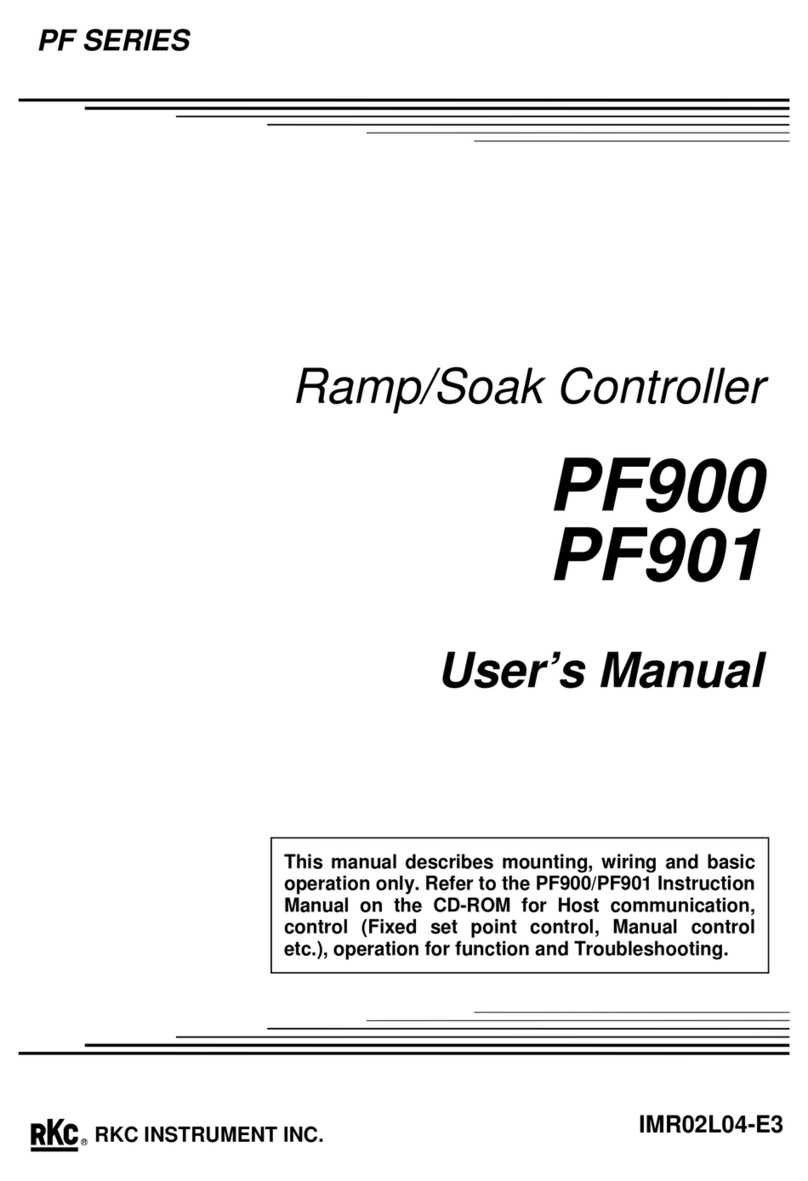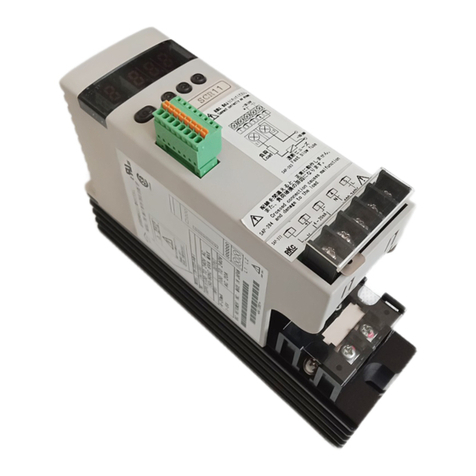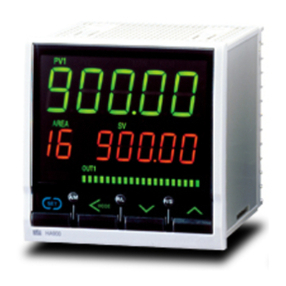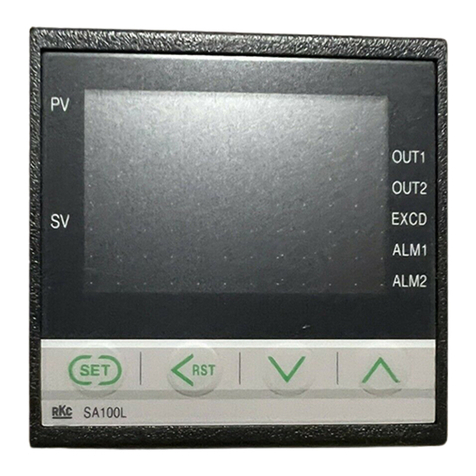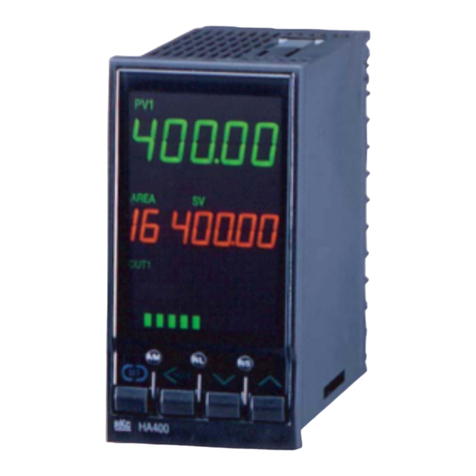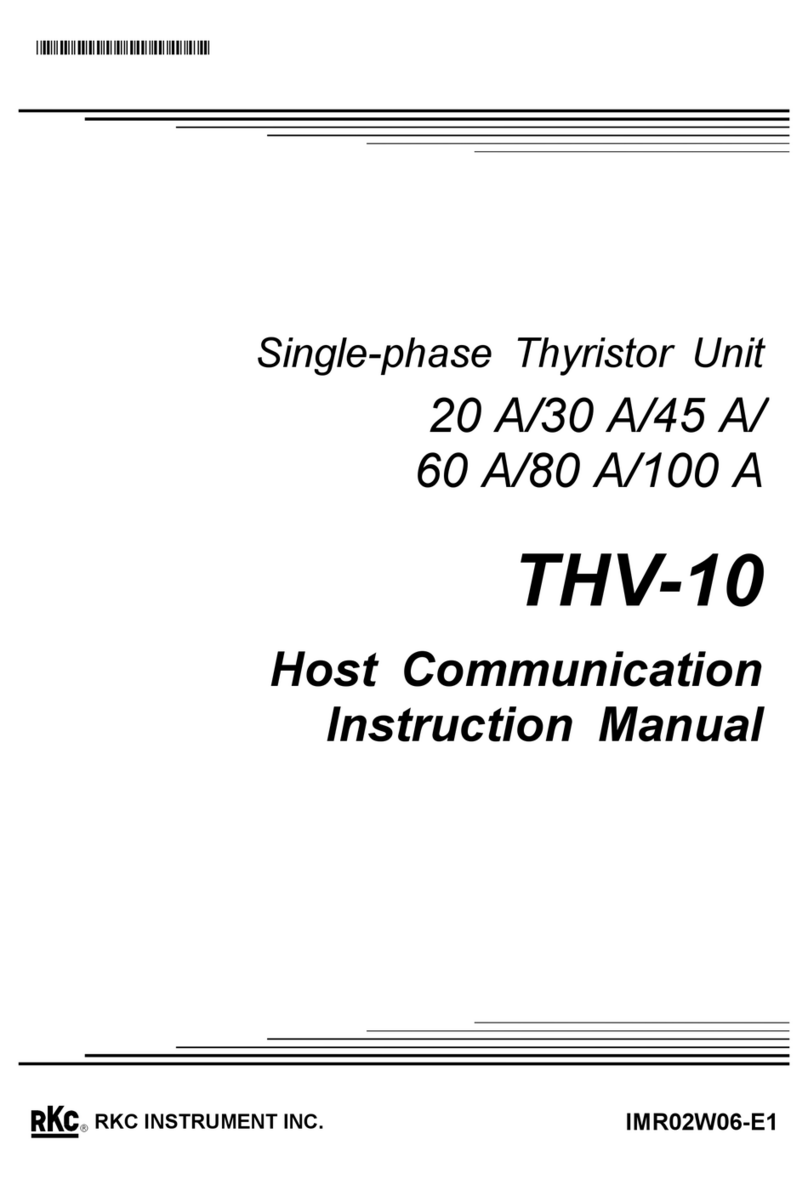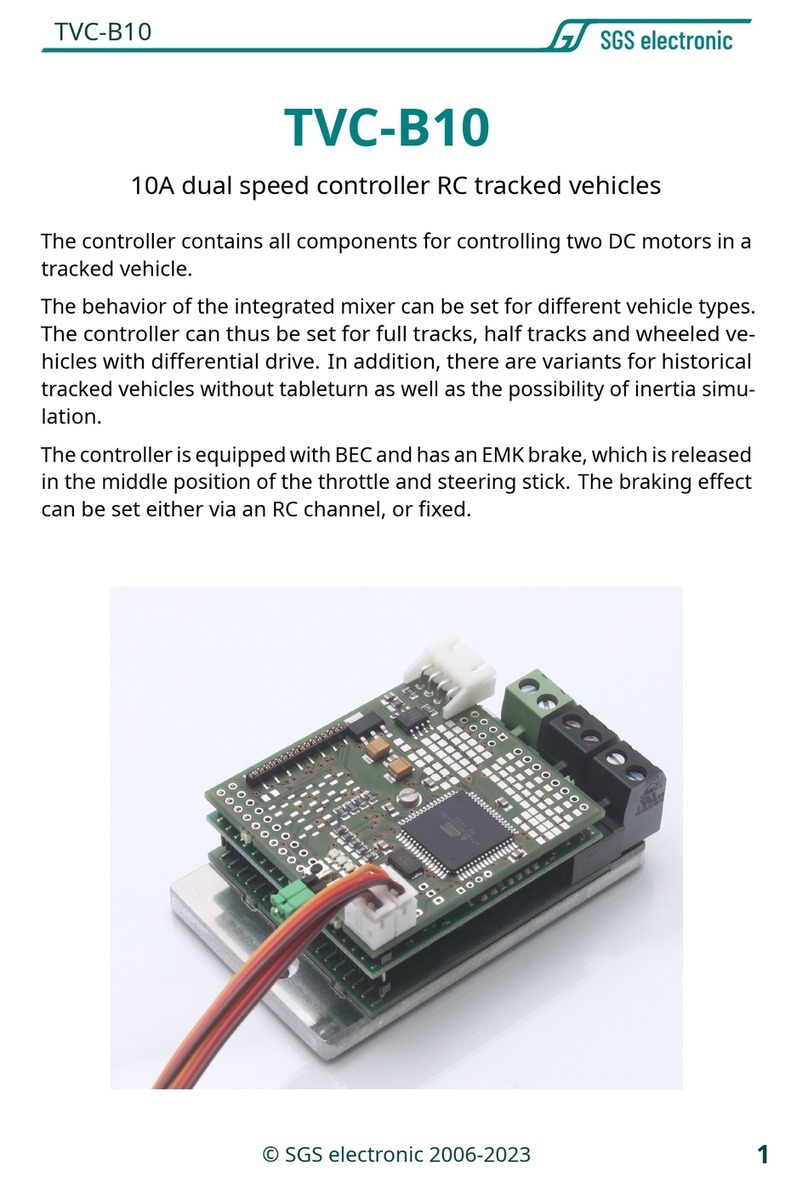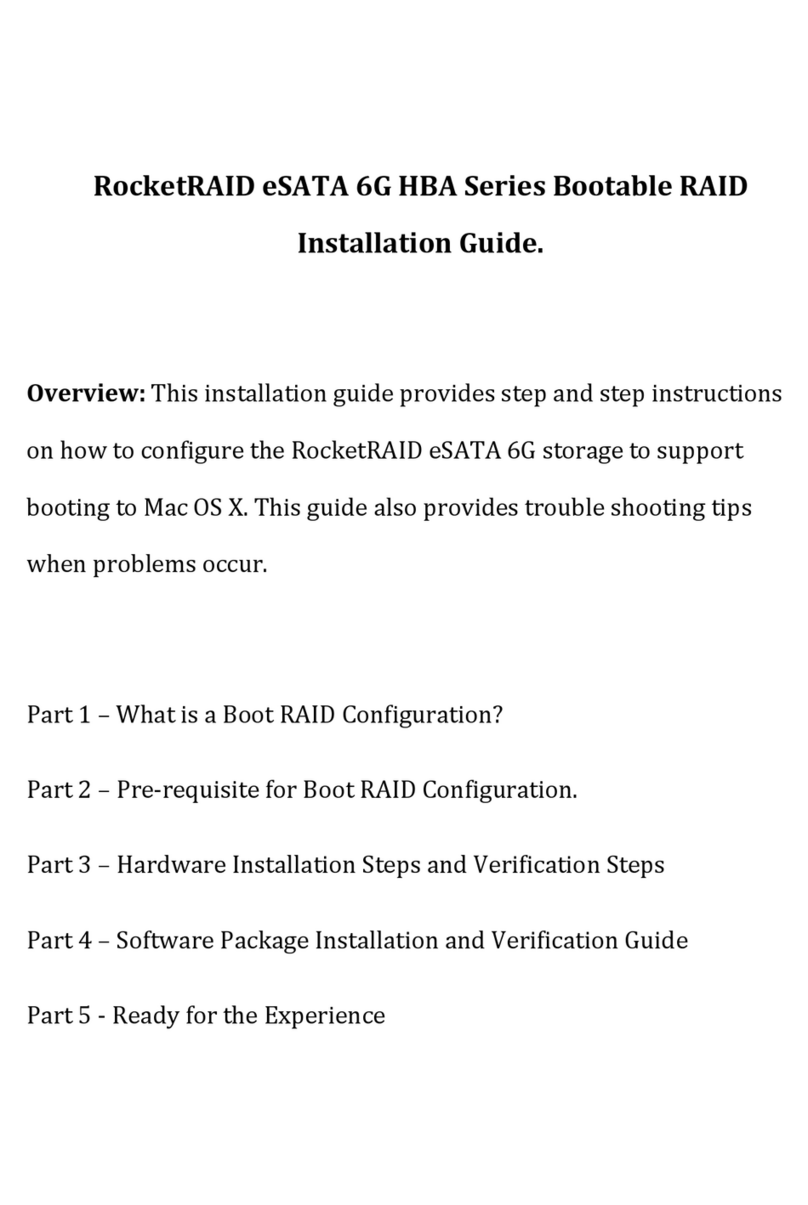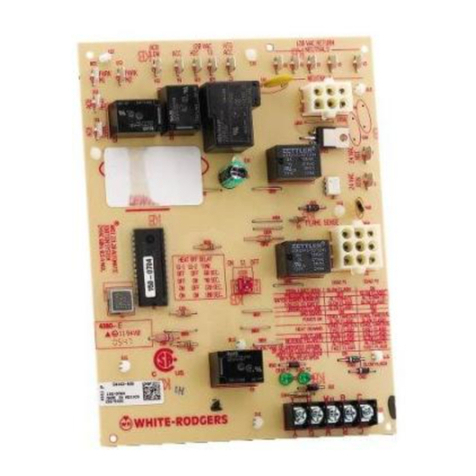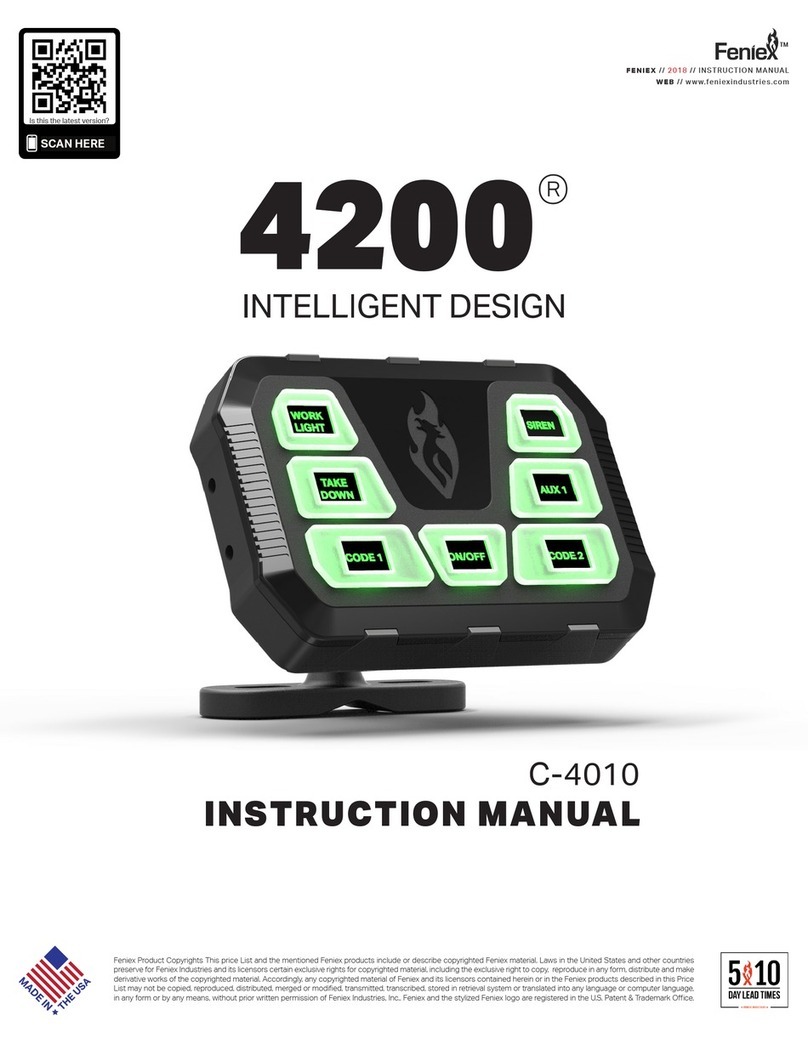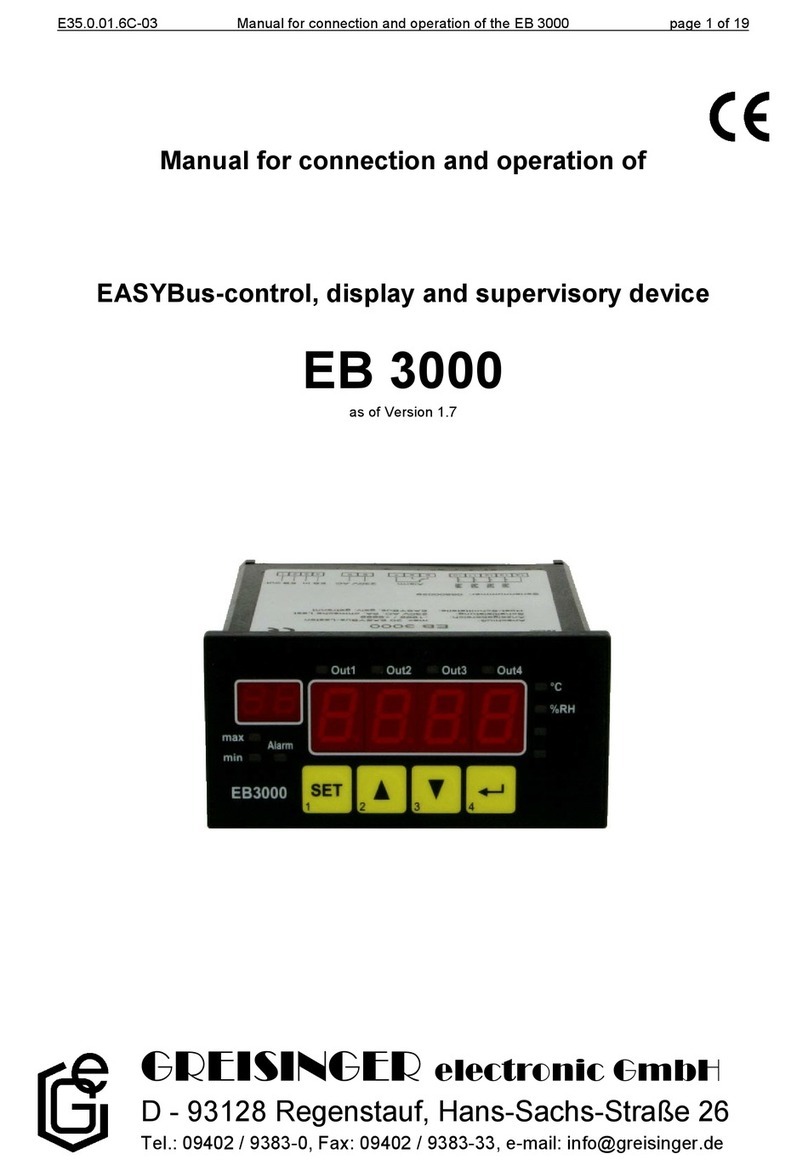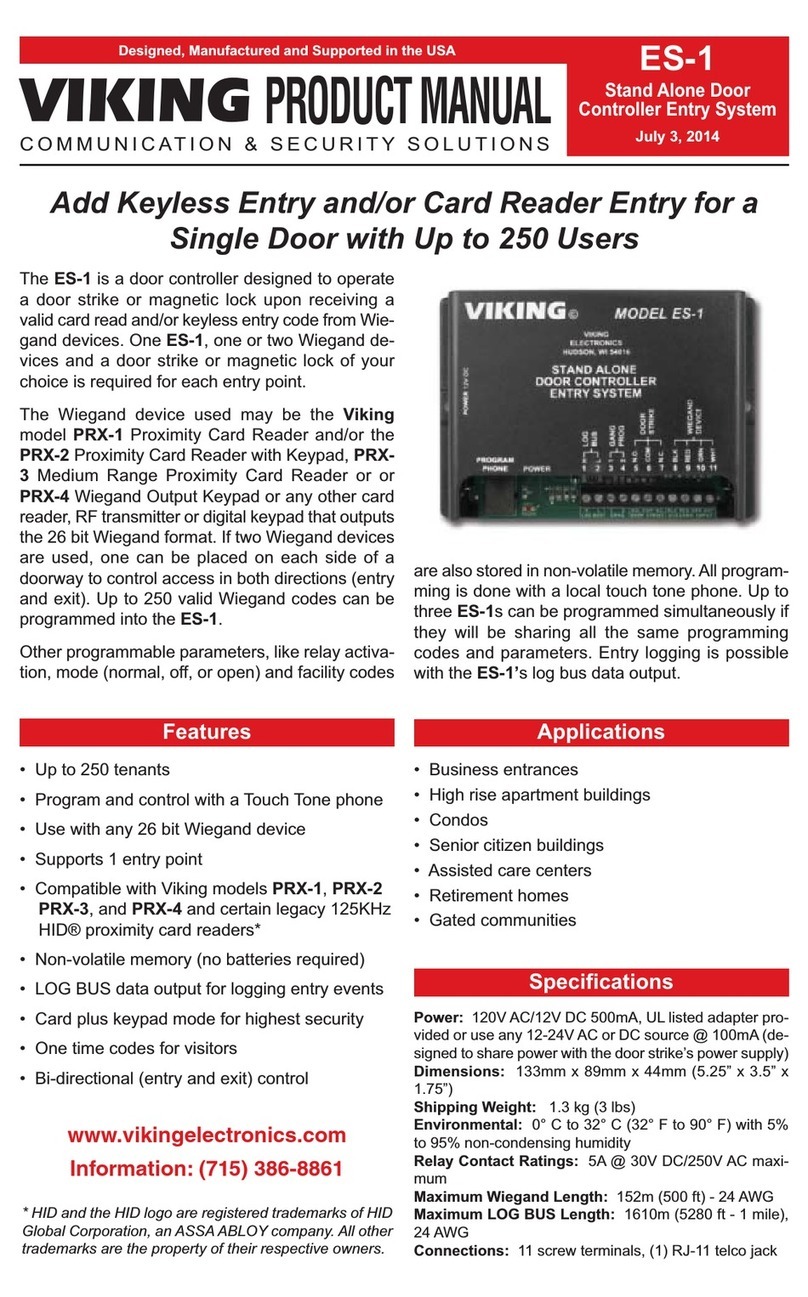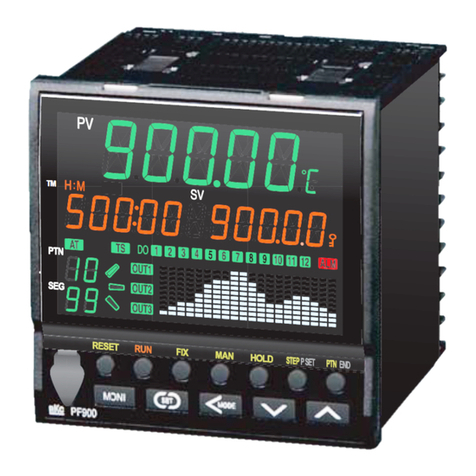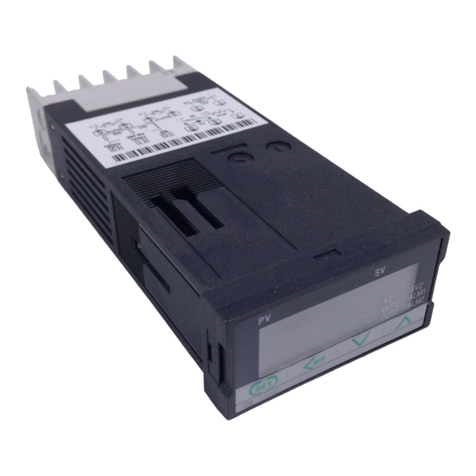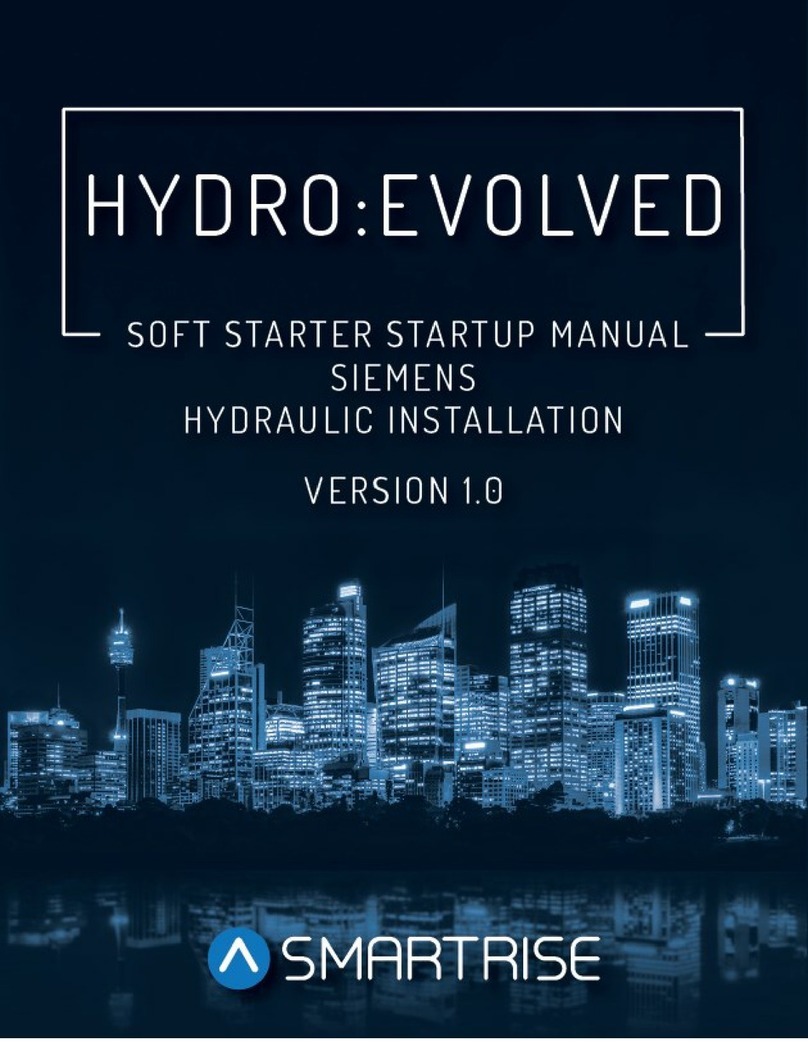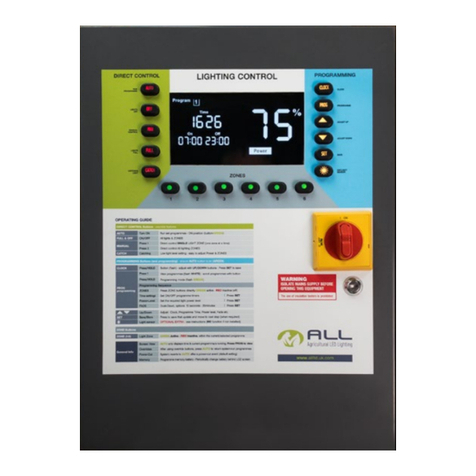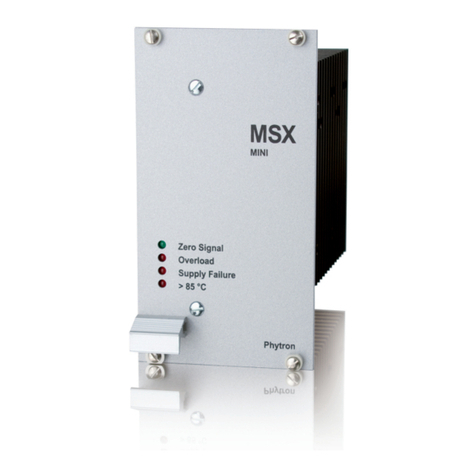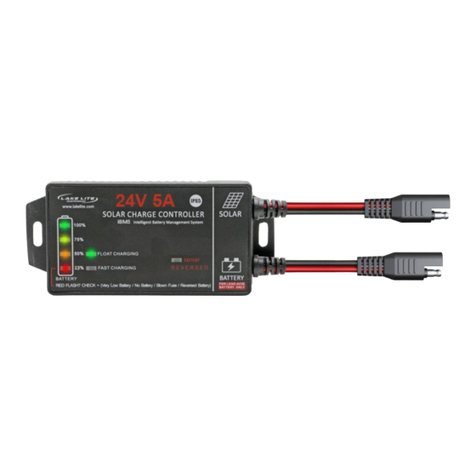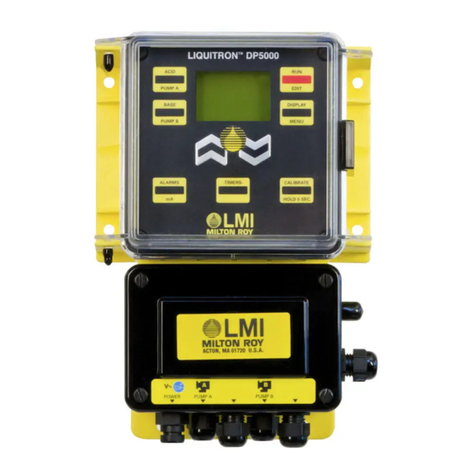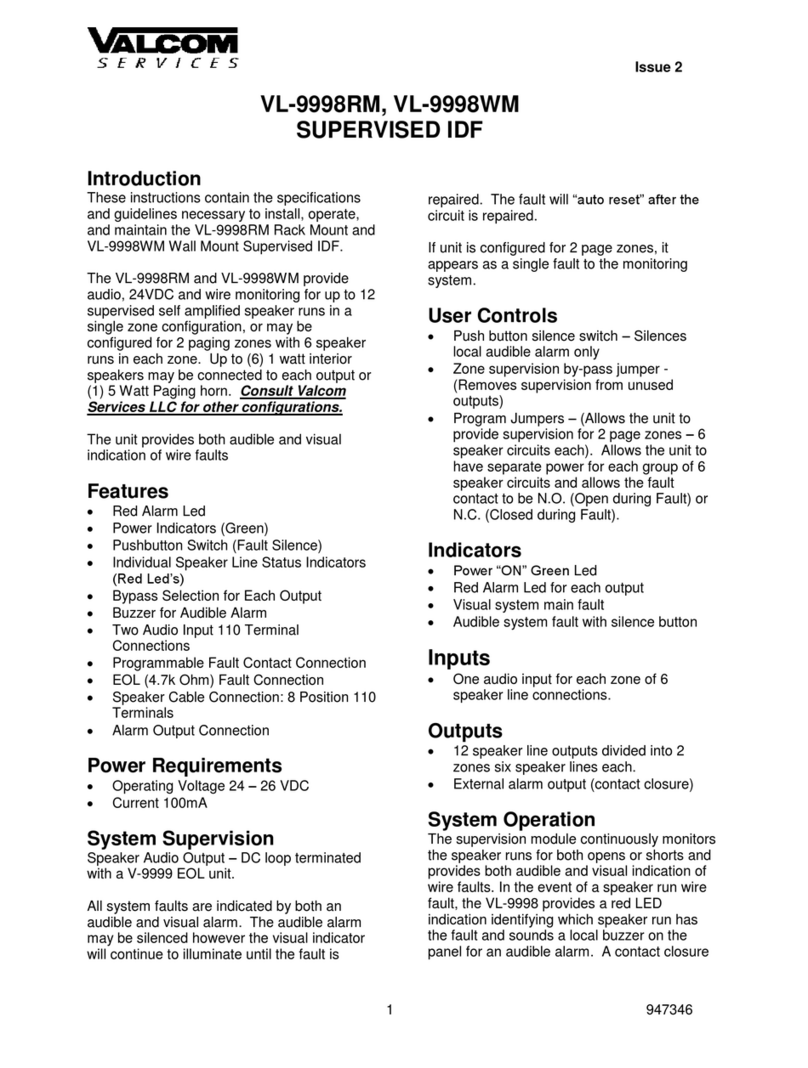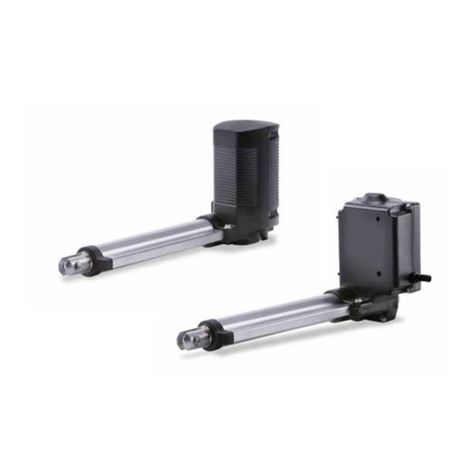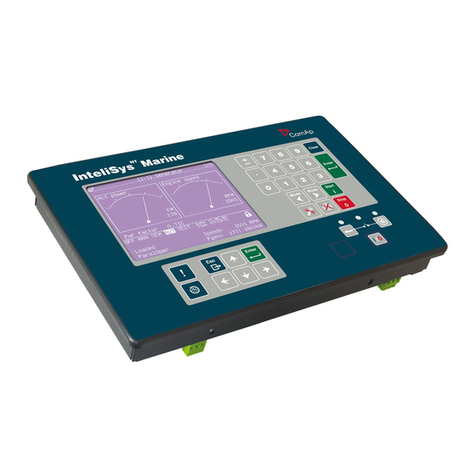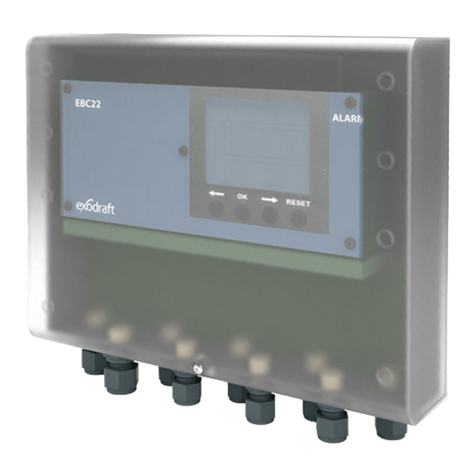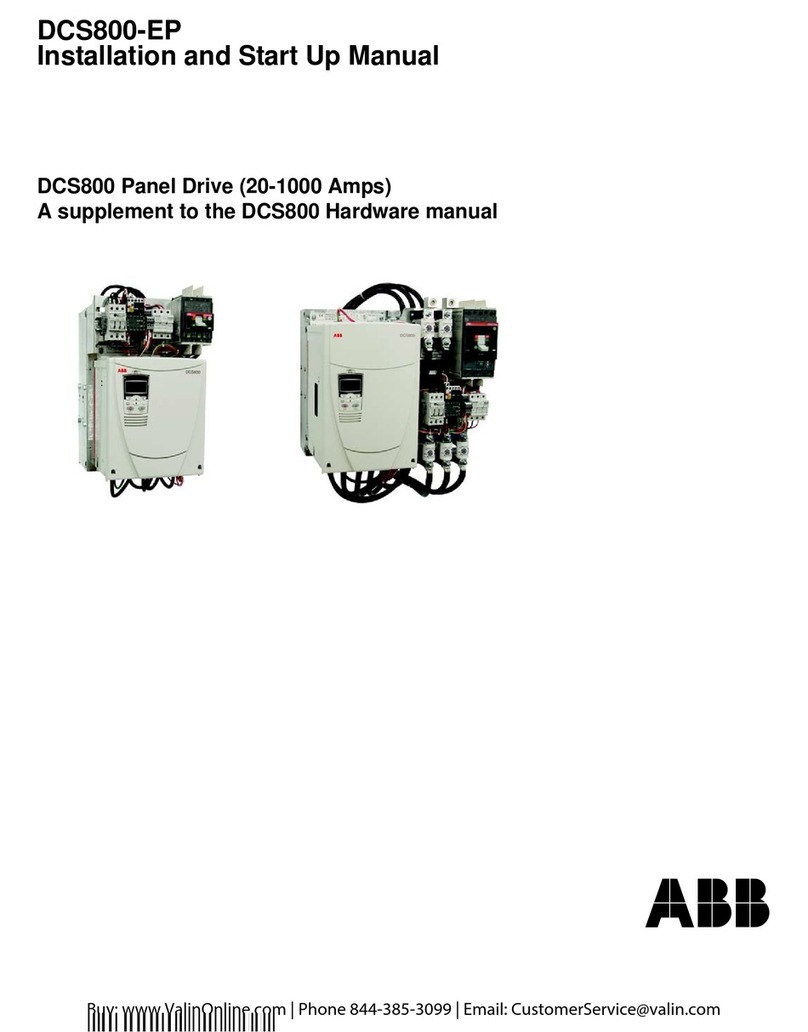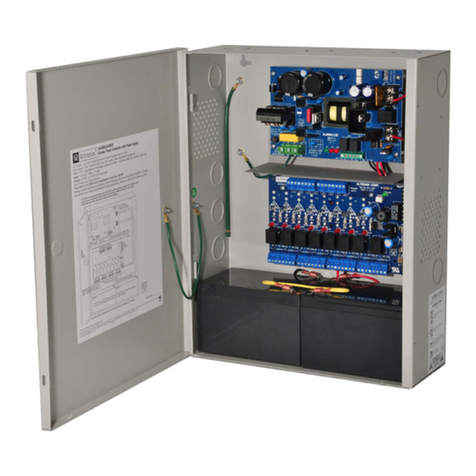
Digital Controller
IMCB37-E1
Thank you for purchasing this RKC product. In order to achieve maximum performance and
ensure proper operation of the instrument, carefully read all the instructions in this manual.
Please place the manual in a convenient location for easy reference.
This manual describes the mounting, wiring and specifications only.
Product check
Safety precautions
This product is intended for use with industrial machines, test and measuring equipment.
(It is not designed for use with medical equipment and nuclear energyplant.)
This is a Class A instrument. In a domestic environment, this instrument may cause radio
interference, in which case the user may be required to take additional measures.
This instrument is protected from electric shock by reinforced insulation. Provide reinforced
insulation between the wire for the input signal and the wires for instrument power supply,
source of power and loads.
Be sure to provide an appropriate surge control circuit respectively for the following:
If input/output or signal lines within the building are longer than 30 meters.
If input/output or signal lines leave the building, regardless the length.
This instrument is designed for installation in an enclosed instrumentation panel. All
high-voltage connections such as power supply terminals must be enclosed in the
instrumentation panel to avoid electric shock to operating personnel.
All precautions described in this manual should be taken to avoid damage to the instrument
or equipment.
If the equipment is used in a manner not specified by the manufacturer, the protection
provided by the equipment may be impaired.
All wiring must be in accordance with local codes and regulations.
All wiring must be completed before power is turned on to prevent electric shock,
instrument failure, or incorrect action. The power must be turned off before repairing work
for input break and output failure including replacement of sensor, contactor or SSR, and
all wiring must be completed before power is turned on again.
To prevent instrument damage as a result of failure, protect the power line and the
input/output lines from high currents with a suitable overcurrent protection device with
adequate breaking capacity such as a fuse, circuit breaker, etc.
A malfunction in this product may occasionally make control operations impossible or
prevent alarm outputs, resulting in a possible hazard. Take appropriate measures in the
end use to prevent hazards in the event of malfunction.
Prevent metal fragments or lead wire scraps from falling inside instrument case to avoid
electric shock, fire or malfunction.
Tighten each terminal screw to the specified torque found in the manual to avoid electric
shock, fire or malfunction.
For proper operation of this instrument, provide adequate ventilation for heat dissipation.
Do not connect wires to unused terminals as this will interfere with proper operation of the
instrument.
Turn off the power supply before cleaning the instrument.
Do not use a volatile solvent such as paint thinner to clean the instrument. Deformation or
discoloration may occur. Use a soft, dry cloth to remove stains from the instrument.
To avoid damage to the instrument display, do not rub with an abrasive material or push the
front panel with a hard object. NOTICE
This manual assumes that the reader has a fundamental knowledge of the principles of
electricity, process control, computer technology and communications.
The figures, diagrams and numeric values used in this manual are only for explanation
purpose.
RKC is not responsible for any damage or injury that is caused as a result of using this
instrument,instrument failure or indirect damage.
RKC is not responsible for any damage and/or injury resulting from the use of instruments
made by imitating this instrument.
Periodic maintenance is required for safe and proper operation of this instrument. Some
components have a limited service life, or characteristics that change over time.
Every effort has been made to ensure accuracy of all information contained herein. RKC
makes no warranty, expressed or implied, with respect to the accuracy of the information.
The information in this manual is subject to change without prior notice.
No portion of this document may be reprinted, modified, copied, transmitted, digitized,
stored, processed or retrieved through any mechanical, electronic, optical or other means
without prior written approval from RKC.
Various symbols are used on the equipment, and they have the following meaning.
: Alternating current : Both direct and alternating current : Reinforced insulation
: Safety precaution
This symbol is used where the instruction manual needs to be consulted for the safety of
both the operator and the equipment. Carefully read the cautions in this manual before using
the instrument.
1. SPECIFICATIONS
Input
Input type:
Thermocouple: K, J, R, S, B, E, T, N, PLII, W5Re/W26Re, U, L
Input impedance: Approx. 1 M
RTD: Pt100, JPt100
Voltage: 0 to 5 V DC, 1 to 5 V DC, 0 to 10 V DC (Z-1010)
Current: 0 to 20 mA DC, 4 to 20 mA DC
Sampling cycle: 0.5 seconds
Input range: Refer to Input range table
Control method
PID control (ON/OFF, P, PI, or PD actions is available)
Control output
Relay contact output: 250 V AC, 3 A (Resistive load)
Electrical life: 300,000 times or more (Rated load)
Voltage pulse output: 0/12 V DC (Load resistance 600 or more)
Current output: 4 to 20 mA DC (Load resistance 600 or less)
Trigger output for triac driving:
Zero cross method for medium capacity triac driving (100 A or less)
Load voltage used: 100 V AC line, 200 V AC line
Load used: Resistive load
Triac output: Output method: AC output (Zero-cross method)
Allowable load current: 0.5 A (Ambient temperature: 40 C or less)
Load voltage: 75 to 250 V AC
Minimum load current: 20 mA
ON voltage: 1.6 V or less (at maximum load current)
Alarm output
Relay contact output: 250 V AC, 1 A (Resistive load)
Electrical life: 50,000 times or more (Rated load)
Performance
Display accuracy (at the ambient temperature 23 C 2 C):
Thermocouple: (0.3 % of display value 1 digit) or 2 C [4 F] Whichever is greater
R, S and B input: 0 to 399 C [0 to 799 F] Accuracy is not guaranteed.
T and U input: 199.9 to 100.0 C [199.9 to 158.0 F] Accuracy is not guaranteed.
RTD: (0.3 % of display value 1 digit) or 0.8 C [1.6 F] Whichever is greater
Voltage/Current: (0.3 % of Input span 1 digit)
Memorybackup
Backed up by Nonvolatile Memory
Number of write times: Approx. 1,000,000 times
Data storage period: Approx. 10 years
Power
Power supply voltage: 85 to 264 V AC [Including power supply voltage variation], 50/60 Hz
(Rating: 100 to 240 V AC)
21.6 to 26.4 V AC [Including power supply voltage variation], 50/60Hz
(Rating: 24 V AC)
21.6 to 26.4 V DC [Including power supply voltage variation]
(Rating: 24 V DC)
Power consumption 7 VA max. (at 100 V AC) 10 VA max. (at 240 V AC)
5 VA max. (at 24 V AC) 160 mA max. (at 24 V DC)
Weight
CB100: Approx. 170 g CB400/500: Approx. 250 g CB700: Approx. 290 g CB900: Approx. 340 g
2. MOUNTING
2.1 Mounting Cautions
(1) This instrument is intended to be used under the following environmental conditions.
(IEC 61010-1) [OVERVOLTAGE CATEGORY II, POLLUTION DEGREE 2]
(2) Use this instrument within the following environment conditions:
Allowable ambient temperature: 0 to 50 C
Allowable ambient humidity: 5 to 95 %RH
(Absolute humidity: MAX. W. C 29.3 g/m3dry air at 101.3 kPa)
Installation environment conditions: Indoor use, Altitude up to 2000 m
(3) Avoid the following conditions when selecting the mounting location:
Rapid changes in ambient temperature which may cause condensation.
Corrosive or inflammable gases.
Direct vibration or shock to the mainframe.
Water, oil, chemicals, vapor or steam splashes.
Excessive dust, salt or iron particles.
Excessive induction noise, static electricity, magnetic fields or noise.
Direct air flowfrom an air conditioner.
Exposure to direct sunlight.
Excessive heat accumulation.
(4) Mount this instrument in the panel considering the following conditions:
Provide adequate ventilation space so that heat does not build up.
Do not mount this instrument directly above the equipment that generates large amount of heat
(heaters, transformers, semi-conductor functional devices, large-wattage resistors.)
If the ambient temperature rises above 50 C, cool this instrument with a forced air fan, cooler,
etc. Cooled air should not blow directly on this instrument.
In order to improve safety and the immunity to withstand noise, mount this instrument as far
away as possible from high voltage equipment, power lines, and rotating machinery.
High voltage equipment: Do not mount within the same panel.
Power lines: Separate at least 200 mm.
Rotating machinery: Separate as far as possible.
For correct functioning mount this instrument in a horizontal position.
(5) In case this instrument is connected to a supply by means of a permanent connection, a switch
or circuit-breaker shall be included in the installation. This shall be in close proximity to the
equipment and within easy reach of the operator. It shall be marked as the disconnecting
device for the equipment.
2.2 Dimensions
*1 Gasket (optional) *2 Up to four mounting brackets can be used.
For mounting of the instrument, panel thickness must be between 1 to 10 mm. (When mounting multiple
instruments close together, the panel strength should be checked to ensure proper support.)
Waterproof and Dustproof are not effective when instruments are closely spaced.
2.3 Mounting Procedures
CB100
<Mounting Procedures>
1. Prepare the panel cutout asspecified in 2.2 Dimensions.
2. Insert the instrument throughthe panel cutout.
3. Insert the mounting frame into the mounting from the rear of the instrument.
4. Push the mounting frame forward until the frame is firmly secured to the panel. (Fig.1)
5. Fix the instrument to the panel by using the two screws. (Fig.2)
The optional waterproof/dustproof on the front of the instrument conforms to IP66
(Checked and confirmed its compliance through the internal test at RKC) when mounted on
the panel. For effective waterproof/dustproof, the gasket must be securely placed
between instrument and panel without any gap. If the gasket is damaged, please
contact RKC sales office or the agent.
<Removal Procedures>
1. Turn the power OFF.
2. Remove the wiring.
3. Loosen the screw of the mounting frame.
4. Remove the mounting frame from the case. (Fig.3)
CB400/500/700/900
<Mounting Procedures>
1. Prepare the panel cutout as specified in 2.2 Dimensions.
2. Insert the instrument through the panel cutout.
3. Insert the mounting bracket into the mounting groove of the instrument. Do not push the
mounting bracket forward. (Fig. 1)
4. Secure the bracket to the instrument by tightening the screw. Take care to refrain from
moving the bracket forward.
5. Only turn about one full revolution after the screw touches the panel. (Fig. 2)
If the screw has been rotated too tight, the screw may turn idle. In such a case, loosen
the screw once and tighten it again until the instrument is firmly fixed.
6. The other mounting bracket should be installed in the same way as described in 3. to 5.
When the instrument is mounted, always secure with two mounting brackets so that upper
and lower mounting brackets are positioned diagonally.
The optional waterproof/dustproof (CB900: mounting bracket 4 pieces) on the front of
the instrument conforms to IP65 (Checked and confirmed its compliance through the
internal test at RKC) when mounted on the panel. For effective waterproof/dustproof,
the gasket must be securely placed between instrument and panel without any gap. If
gasket is damaged, please contact RKC sales office or the agent.
<Removal Procedures>
1. Turn the power OFF.
2. Remove the wiring.
3. Loosen the screw of the mounting bracket.
4. Hold the mounting bracket by the edge () and tilt it ()to remove from the case. (Fig. 3)
5. The other mounting bracket should be removed in the same way as described in 3. and 4.
6. Pull out the instrument from the mounting cutout while holding the front panel frame of this
instrument. (Fig. 4)
3. WIRING
For detailed handling procedures, various function settings and parameters, refer to
separate CB100/CB400/CB500/CB700/CB900 INSTRUCTION MANUAL (IMCB34-E).
The manual can be downloaded from the official RKC website:
http://www.rkcinst.com/english/manual_load.htm.
To prevent injury to persons, damage to the instrument and the
equipment, a suitable external protection device shall be required.
All wiring must be completed before power is turned on to prevent
electric shock, fire or damage to the instrument and the equipment.
This instrument must be used in accordance with the specifications to
prevent fire or damage to the instrument and the equipment.
This instrument is not intended for use in locations subject to
flammable or explosive gases.
Do not touch high-voltage connections such as power supply
terminals, etc. to avoid electric shock.
RKC is not responsible if this instrument is repaired, modified or
disassembled by other than factory-approved personnel. Malfunction
may occur and warranty is void under these conditions.
All Rights Reserved, Copyright 2018, RKC INSTRUMENT INC.
Installation
Manual
CB100/CB400/CB500/CB700/CB900 Installation Manual (IMCB37-E1)............................ 1
Mounting frame [CB100] (KCA100-526)
.....................................................................................1
Mounting brackets [CB400/500/700/900] (KCA400-532)*
.......................................................2
* For CB900 waterproof/dustproof (optional): 4 pieces
CB100/CB400/CB500
CB700/CB900
!
To prevent electric shock or instrument failure, always turn off
the power before mounting or removing the instrument.
Fig.3
Fig.1 Fig.2 When using the mounting
screws, only turn one full
revolution after the screw
touches the panel.
Screw
Mounting
frame
Fig.2Fig.1
Fig. 3 Fig. 4
Front panel
frame
Pull out
Panel
To prevent electric shock or instrument failure, do not turn on
the power until all wiring is completed. Make sure that the
wiring is correct before applying power to the instrument.
9.2
8.2 100
61.6 44.8
48
(Unit: mm)
48
1(*1)
CB100
25
25 25
450.6
+0.6
Individual Mounting
0
L1
n: Number of
controllers
(2 to 6)
45
L148n3
44.8
25
Close vertical mounting
+0.6
45
0.6
0
25
30
L1
(Unit: mm)
n: Number of
controllers
(2 to 6)
L148n3
44.8
48
96
9.2
8.2 100
91.8
107.4
1(*1)
92 0.8
0
CB500 Individual Mounting
Close vertical mounting
+0.6
45
92 0.8
0
+0.6
n: Number of
controllers
(2 to 6)
L196n4
(Unit: mm)
CB900 Individual Mounting
Close vertical mounting
25
30
L1
9.2
8.2 100
1.
107.4
1(*1)
96
96
91.8
*2
92+0.8
0.8
0
920.8
0
92 +0.8
25 450.6
0
30
L1
(Unit: mm)
CB400 Individual Mounting
Close vertical mounting
n: Number of
controllers
(2 to 6)
L148n3
9.2
8.2 1100
91.8
107.4
(*1)
44.8
48
96
0.6
0
92 +0.8
92 +0.8
(Unit: mm)
n: Number of
controllers
(2 to 6)
L172n4
CB700 Individual Mounting
25
L10.7
0
67.8
9.2
8.2 100
83.4
67.8
1(*1)
72
72
68
0.7
0
Close vertical mounting
68 +0.7
68+0.7



